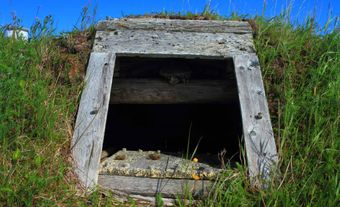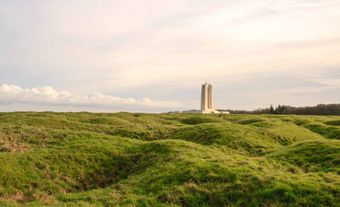Tombstones
Tombstones, upright markers or monuments placed at gravesites, are of 2 general types - the stele, an upright slab or pillar; and the 3-dimensional sculptural type, sometimes referred to as Victorian. Materials for the stele are commonly stone, slate or marble. The pattern consists, generally, of an upper panel of bas relief sculpture - angel's or death's head with wings, hourglass, willow tree or other symbols suggesting death or grief. Lettering takes up the space below and includes factual records of birth, death, marriage and usually an epitaph. The best, most delicate examples of this sculpture are seen in the Maritimes, but such work is very vulnerable to harsh winter weather and the growth of lichens.
In addition to the stele, the visitor to Canadian cemeteries will find such 3-dimensional sculptures as an angel or a grieving woman resting against the "Old Rugged Cross." Carrara marble from Italy was a favourite material. These monuments were most common in Canada in the 19th and early 20th centuries. Unfortunately, alternate freezings and thawings have caused angels to lose their wing tips and noses, and male cherubs have suffered their particular indignities.
Many cemeteries started as parks to which the public was invited for picnicking. The specimen trees that have grown up now form a cool and leafy forest for the historian or the tombstone enthusiast. See also cemeteries.

 Share on Facebook
Share on Facebook Share on X
Share on X Share by Email
Share by Email Share on Google Classroom
Share on Google Classroom


